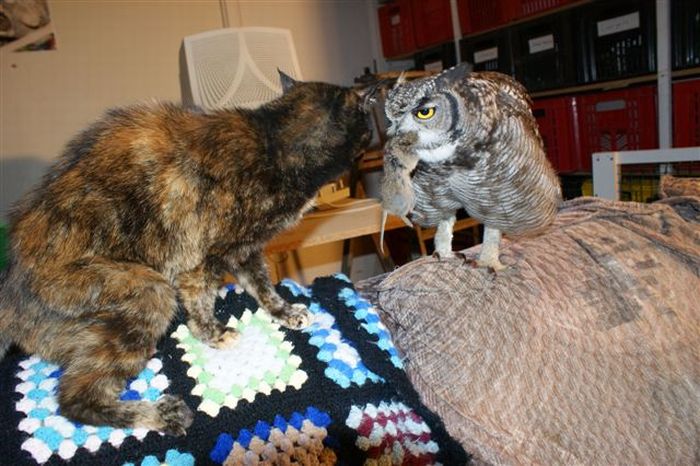|
|
Eagle Owl And Cat Friends
|
Specimen UMMP V31030, a Late Pliocene coracoid from the Rexroad Formation of Kansas (USA), cannot be conclusively assgned to either the present genus or Strix. This fossil is from a taxon similar in size to the Great Horned Owl (B. virginianus) or the Great Grey Owl (S. nebulosa).
The Sinclair Owl (Bubo sinclairi) from Late Pleistocene California may have been a paleosubspecies of the Great Horned Owl, while the roughly contemporary Bubo insularis of the central and eastern Mediterranean has been considered a junior synonym of a Brown Fish-owl paleosubspecies. Additional paleosubspecies are discussed on the appropriate species page.
Several presumed Bubo fossils have turned out to be from different birds. The Late Eocene/Early Oligocene eared owls "Bubo" incertus and "Bubo" arvernensis are now placed in the fossil barn-owl genera Nocturnavis and Necrobyas, respectively. "Bubo" leptosteus is now recognized as primitive owl in the genus Minerva (formerly Protostrix). "Bubo" poirreiri from the Late Oligocene or Early Miocene of Saint-Gérard-le-Puy in France, is now placed in Mioglaux.
On the other hand, the supposed fossil heron "Ardea" lignitum from the Late Pliocene of Plaue-Rippersroda (Germany) was apparently an owl and close to Bubo or more probably actually belongs there. Given its age – about 2 million years ago or so – it is usually included in the Eurasian Eagle-owl today.
|
|









